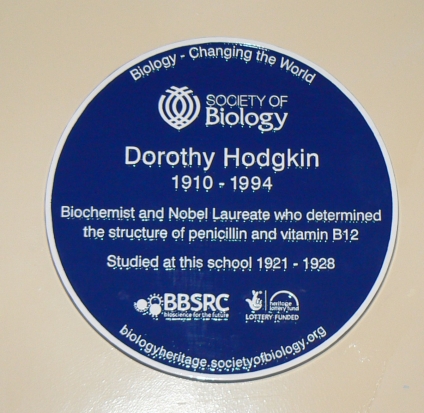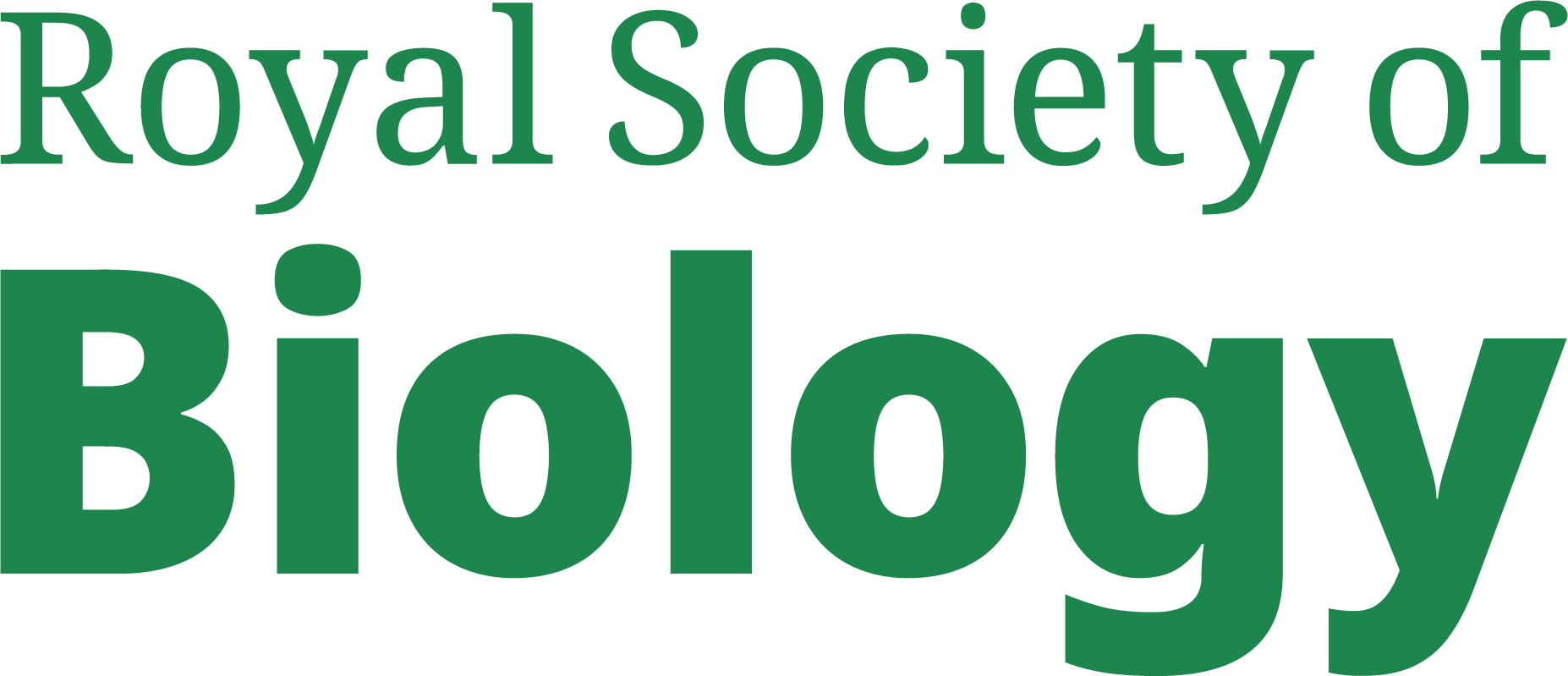News
Plaque celebrating Dorothy Hodgkin unveiled in Suffolk
- Details
- 12 March 2015
A plaque celebrating Dorothy Hodgkin, the UK's only woman to win a scientific Nobel Prize, was unveiled today by the Society of Biology at Sir John Leman High School in Suffolk.
Hodgkin (1910-1994) studied at the school in the 1920s and went on to win a Nobel Prize in 1964 for her work using X-rays to determine the structure of molecules including penicillin and insulin.
The Society of Biology installed the blue plaque as part of a new series of ten plaques around the UK celebrating eminent but sometimes unsung heroes of biology.
At the ceremony Professor Sir Tom Blundell FSB, director of research and professor emeritus in biochemistry at the University of Cambridge, who worked with Dorothy Hodgkin in the 1960-70s, gave a speech:
"Dorothy Crowfoot Hodgkin was not only one of the greatest scientists of the 20th century but also one of the warmest and most human people I have ever known. After working with JD Bernal in Cambridge in the 1930s she pioneered the application of the then relatively new technique of X-ray crystallography to the determination of complex biological molecules like penicillin, vitamin B12 and insulin. She became one of the first women to be elected to the Royal Society.
“Her team was truly international and she influenced the development of science in China, India and South America. Although her husband was often away in Ghana, she brought up a family while working full time. The students, post-doctorals and visiting researchers in her group became part of a large international family that remains close and inspires their students and friends throughout the world with the Hodgkin approach to science.”
Dorothy lived in Geldeston in Norfolk for most of her childhood, and went to school in Beccles from 1921-28. Her teacher, Miss Deeley, allowed her and one other girl, Norah Pusey, to join the boys doing chemistry at school.
Dorothy went on to study at the Universities of Oxford and Cambridge and was one of the first people to use X-rays to study the structure of biological molecules. She developed the ‘X-ray crystallography’ technique to reveal the molecular skeletons of penicillin, vitamin B12 and insulin. Her discoveries have allowed us to better understand a range of illnesses, including diabetes, and in some cases to make synthetic versions of proteins as treatments. X-ray crystallography continues to be an important tool in understanding disease and designing new medicines.
Member of Parliament for Waveney, Peter Aldous MP, and Mayor of Beccles, Councillor Caroline Topping, also attended the ceremony to honour this local hero.
The new series of celebratory plaques also include those to: Steptoe, Edwards and Purdy, IVF pioneers, in Oldham; Richard Owen, who invented the word ‘dinosaur’ and founded the Natural History Museum, in Lancaster; and Dolly the sheep, and the team who created her, in Edinburgh.
The ten blue plaques are part of the national Biology: Changing the World project; which also includes a new app, website, public engagement programme and teaching resources. The free app, available in the apple and android app stores, uses your location to introduce you to the great biologists who lived and worked nearby and biological discoveries which were made in the area.
Dr Mark Downs FSB, chief executive of the Society of Biology said:
“We have a great heritage of scientific discovery and an exciting future, but the biologists who have contributed to our understanding of the world are not always given the appreciation they deserve. We are delighted to be giving these biologists the recognition awarded to other great historical figures through Biology: Changing the World. The project is also a celebration of biology and biologists today. The life sciences will be essential for solving the problems of the 21st Century such as food security and antibiotic resistance. By highlighting our great biology heritage we hope to inspire the next generation.”
The Biology: Changing the World project of the Society of Biology was developed in partnership with the Biotechnology and Biological Sciences Research Council (BBSRC) and received funding from the Heritage Lottery Fund.
Professor Jackie Hunter, chief executive of the BBSRC, said:
“I’m delighted that BBSRC has been involved with this scheme to raise the profile of unsung heroes of bioscience who have changed the world with their contributions. We hope that these plaques will spark curiosity and help inspire new generations to get involved in the biosciences, which will continue to change the world and help us meet the challenges of the future.”

